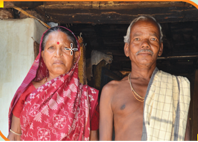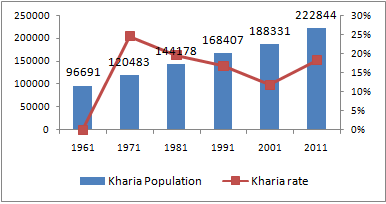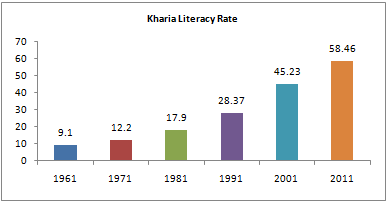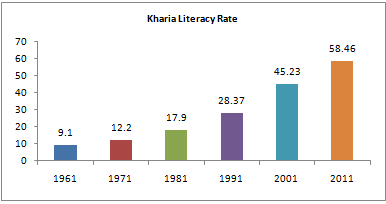A scheduled tribe of Odisha.

Location (Major) : Sundergarh, Sambalpur, Mayurbhanj, Jharsuguda
Language : Kharia ( Austro-Asiatic) & Odia (Indo-Aryan)
Major Occupation : Cultivation, Forest Collection, Hunting, Labour & Rope Making
Also known as Kharian
Other Distinct Socio-cultural Features
The term Kharia, Kharian comes from kharkharia, the palanquin bearer. The Kharia are thus named in accordance with the tradition that their first ancestors carried a banghy (carrying pole). Their history of origin shows that their traditional occupation had been to till the soil and carry banghy. The tribe is split into three social groups, namely the Pahari Kharia (Hill Kharia), the Dhelki Kharia (early-comers), and the Dudh Kharia (pure Kharia) among whom the Hill Kharia is recognized as a PTG in Odisha. They are the autochthons of the Simililpal hills. They used to settle in small thatched huts in the foothills. They practice arrangedmarriage and prefer cross cousin marriage. They pay bride price. After marriage, the newlyweds set up separate establishments. Life cycle rituals are meticulously observed. Birth pollution continues for twenty-one days, the name giving ceremony is observed. They bury the dead and the death ritual is observed on the tenth day. The village council is constituted of the village head, priest, Dehury and the village elders. Cases of theft and homicide are adjudicated in the village council. Thakurani or the Earth Goddess is the supreme deity of the Hill Kharia. They also worship Dharni Devta and a hero named Banda. They have the tradition of dance and music performed on different occasions.


